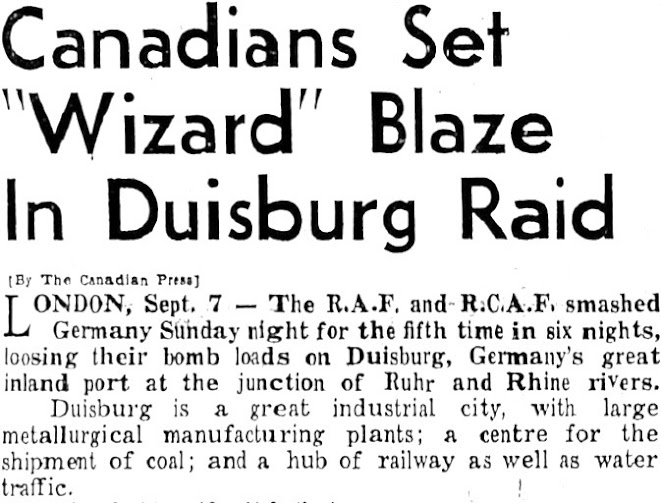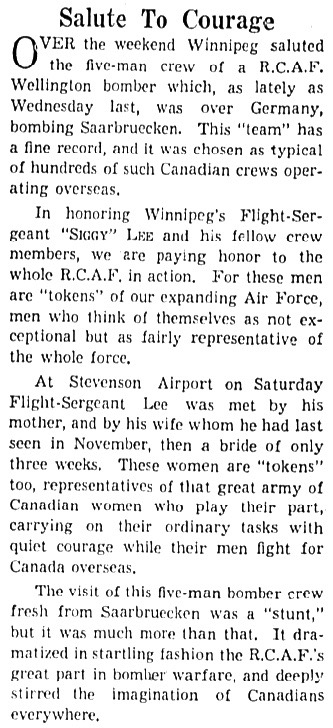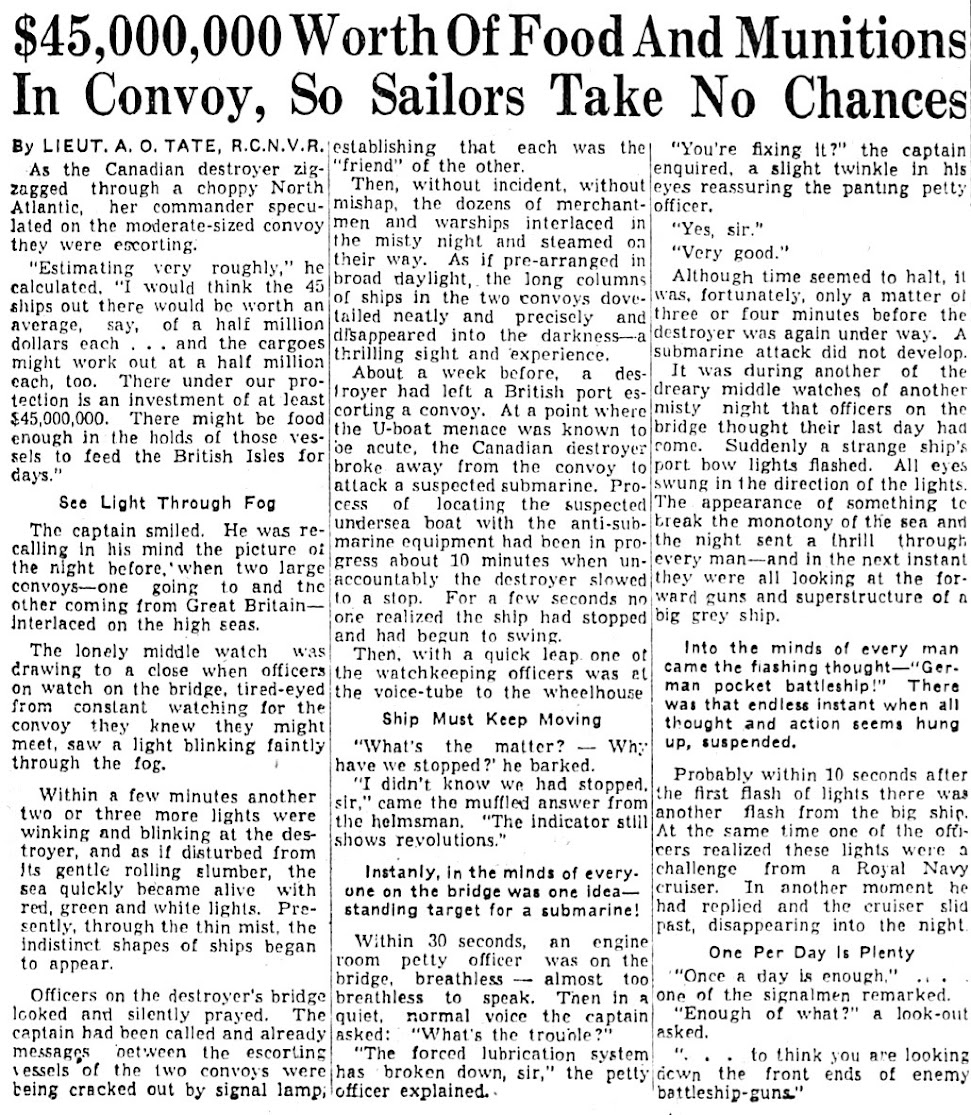Some Canadian Volunteers Became Signalmen,
a 'Vital (Communications) Unit'
Members of the Royal Canadian Navy Volunteer Reserve filled a variety
of important roles during World War II (full article below). Photo - The
Winnipeg Tribune, Sept. 7, 1942. The Winnipeg Tribune archive
Introduction:
There is still some mention of details associated with the Dieppe Raid in this last entry (for now) regarding clippings found in a central Canadian newspaper about 3 weeks after a few thousand Canadian troops and handfuls of sailors got their first severe taste of action facing German artillery. But we can sense the news is in decline, Allied attention and significant events are elsewhere, on other fronts.
More information is coming from Stalingrad, a pivotal battle that certainly affected the outcome of WWII; Canadians in RCNVR/Combined Operations are involved in more training re handling landing craft in preparation for Operation TORCH (invasion of North Africa, to begin on November 8); the RCAF is making itself known in various way; more eyes are on the war front in SE Asia.
However, before I move on to another topic, please find below a few more details from September, 1942:
As mentioned at top of page, "members of the Royal Canadian Navy Volunteer Reserve filled a variety of important roles during World War II"; some joined RCNVR and shortly thereafter trained to become signalmen, a vital communications unit (see article below); some (about 1% of all new recruits during WWII) joined RCNVR and shortly thereafter volunteered for Combined Operations Command and were soon learning how to navigate small, speedy landing crafts (e.g., landing craft assault or LCAs, landing craft mechanised or LCMs) in which to transport Allied troops to foreign shores:
"NEW ASSAULTS ON STALINGRAD FAIL"
Siggy makes a big splash in Winnipeg!
The spotlight shines on other than Siggy as well (though "he ain't done yet!"). More from 'the Dieppe show':
It doesn't take a wizard to know that airmen, just like members of the army and navy, come up with their own terminology at times:
More news coming out of Africa and soon it will dominate the front pages:
It's not often that a case of the jitters makes the front page of any newspaper!
More items from a hospital ward, re Dieppe:
I learned something new from the next photo, i.e., a typical Londoner looks a lot like my grandmother!
There were no small roles to fill during WWII:
Somebody doesn't like Jack Carson!
Winnipeggers and other Canadians celebrate Labour Day, but...
Siggy and his crew are saluted:
Below we read that news arrives late upon North American shores at times for a wide variety of reasons. Oh, and if you can't find your hammer...
Siggy Lee is still in the news! Must be something about the name 'Siggy':
Members of the RCNVR in Combined Operations also felt that it was important to be seen as separate Canadian flotillas as the war progressed. Canadian sailors were sprinkled among British crews and landing crafts at times during early raids and invasions but liked to see distinctly Canadian flotillas formed when possible, e.g., during the invasion of Sicily and Italy in 1943, and France in 1944.
American production of all manner of military hardware was unsurpassed during the later half of WWII. Below is a huge ship assembled and launched in record time:
Please click here to view Research: Post-Dieppe, Sept. 1 - 7, 1942 (Part 5)
Unattributed Photos GH






























No comments:
Post a Comment